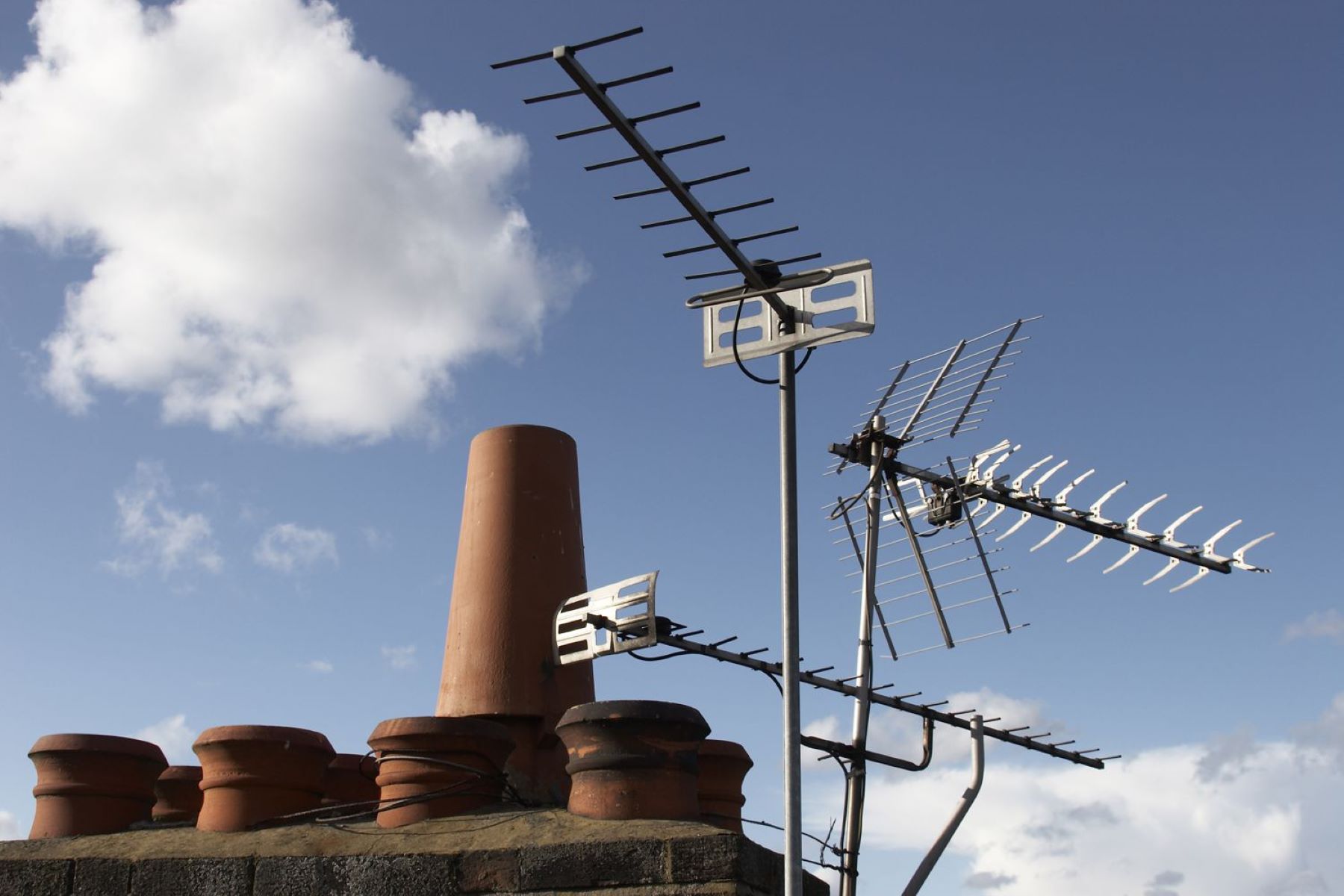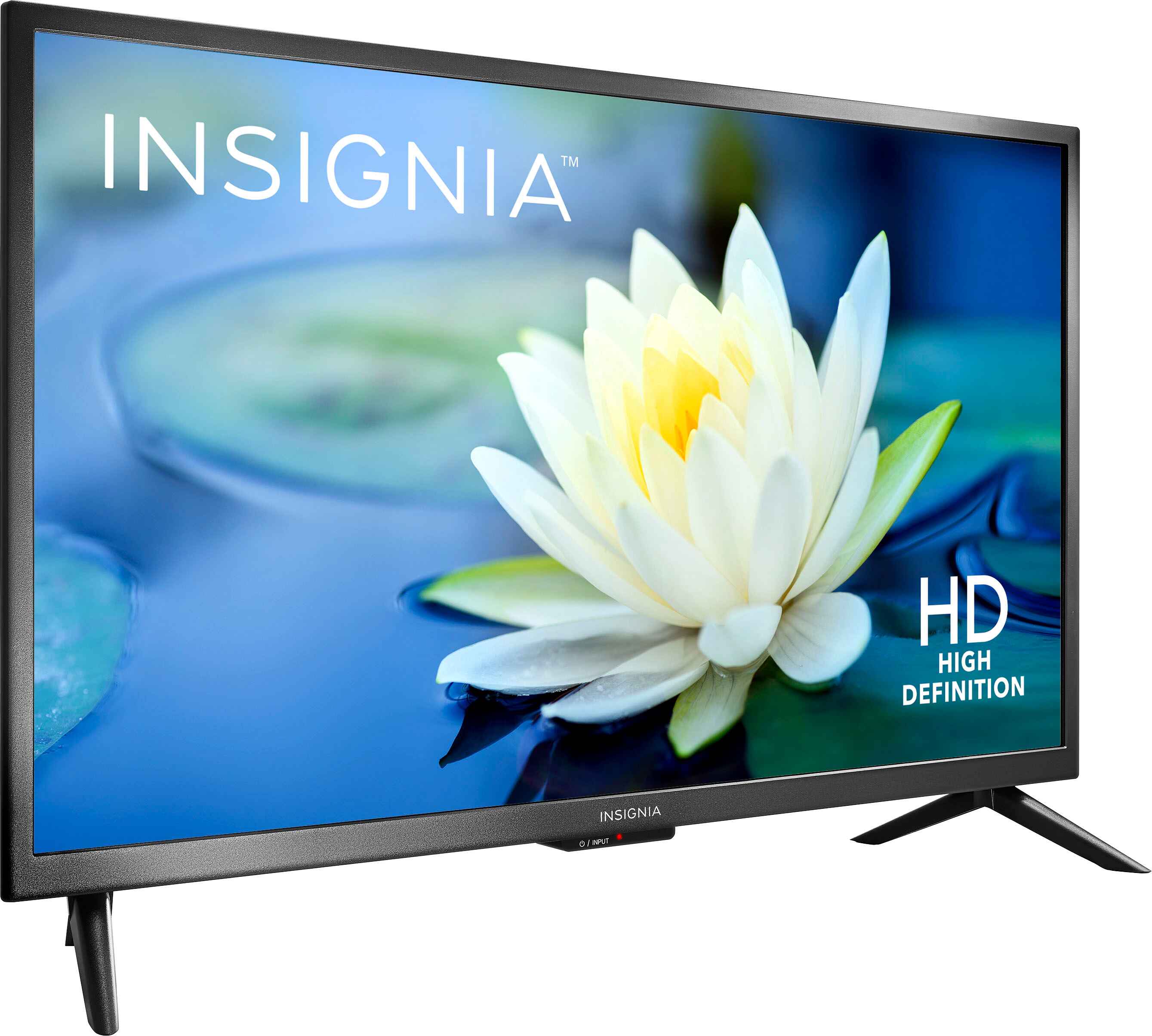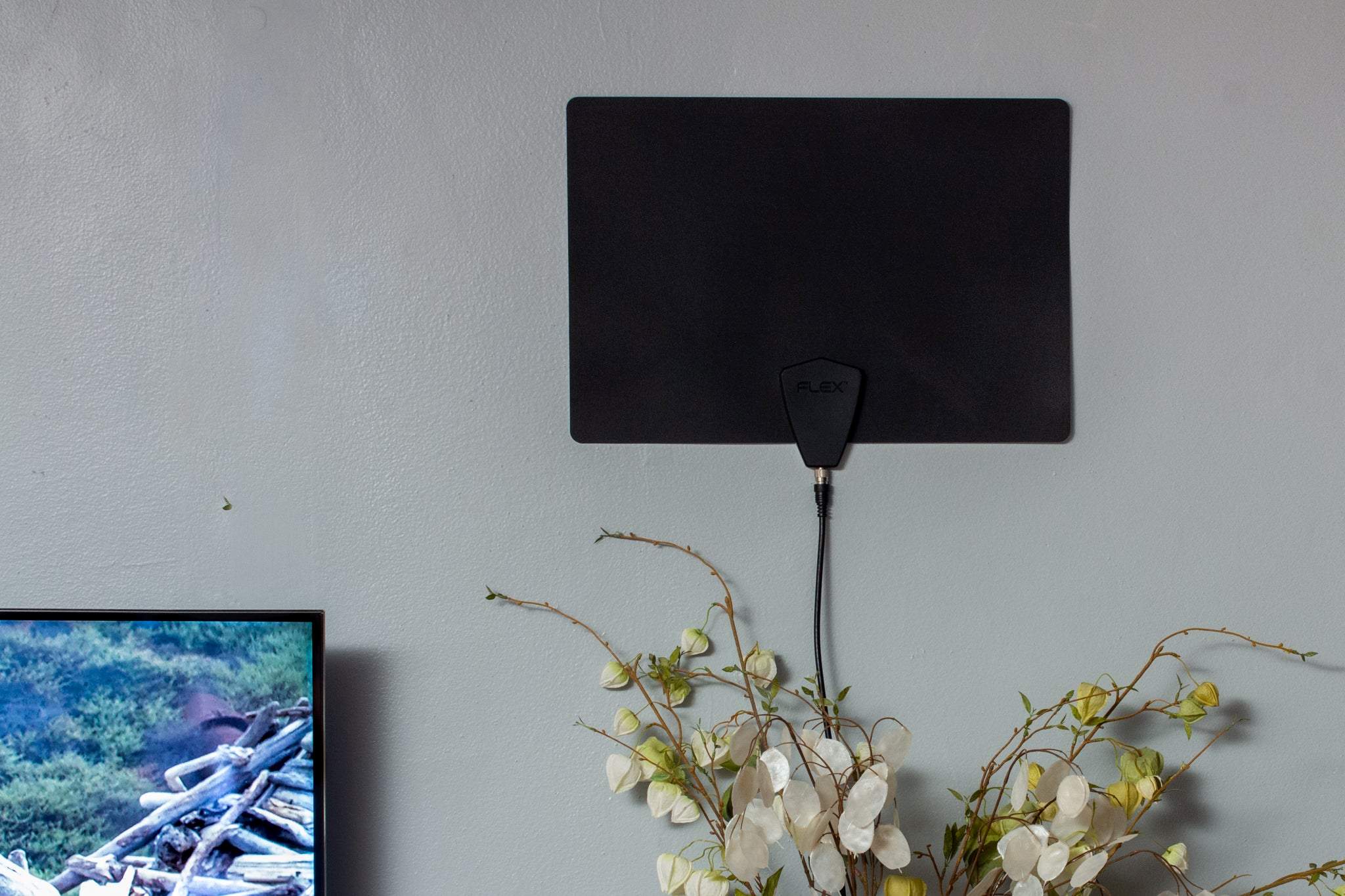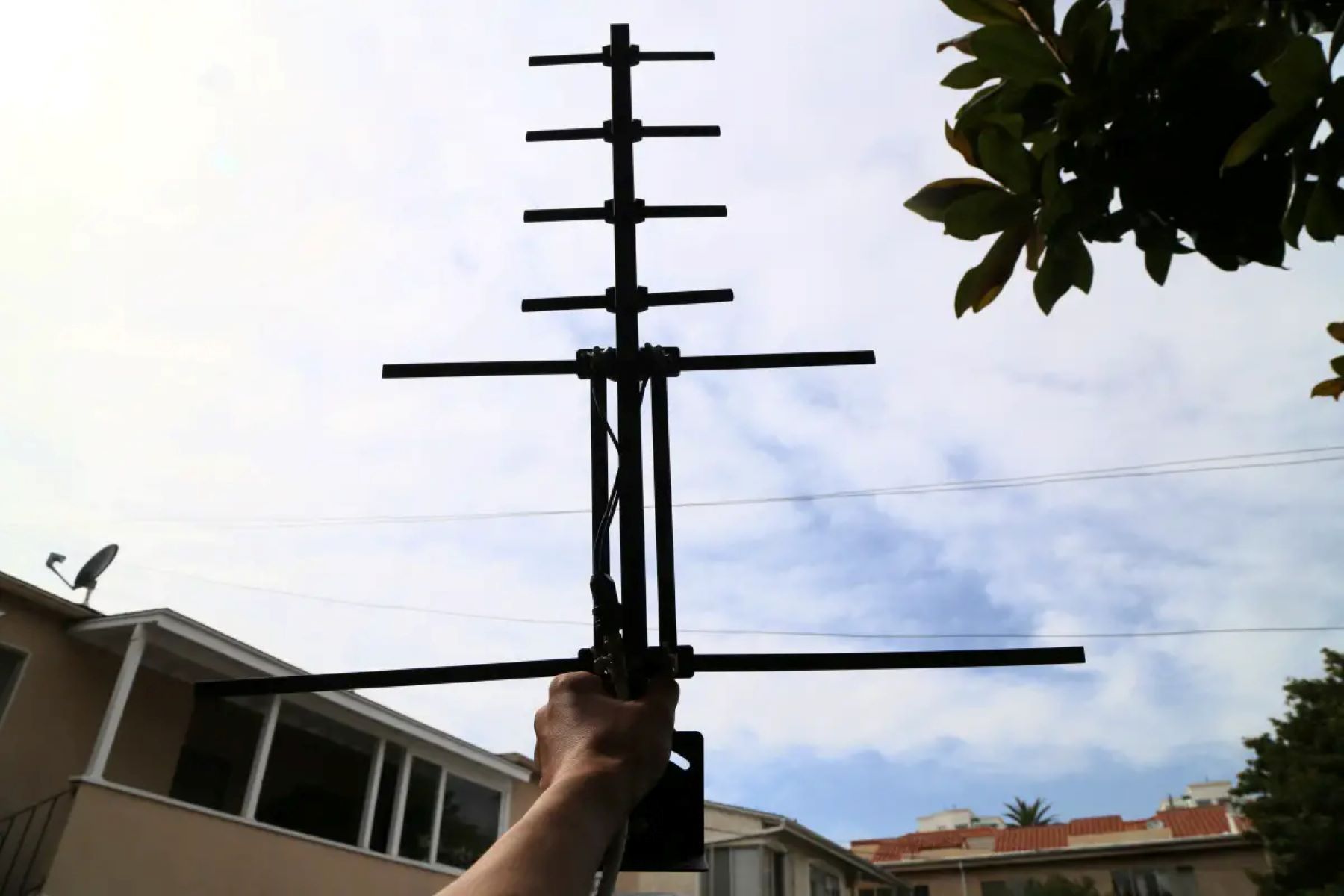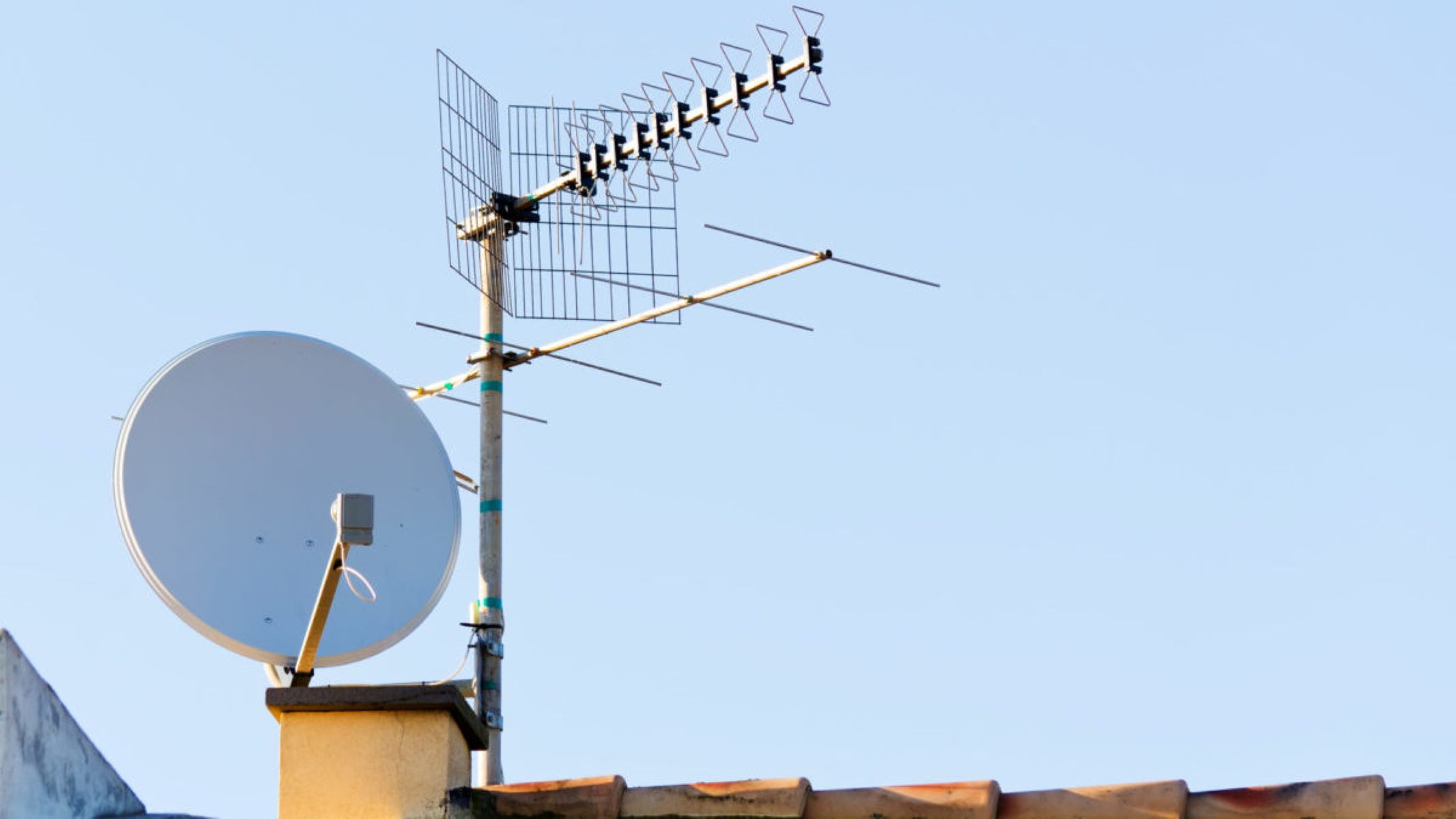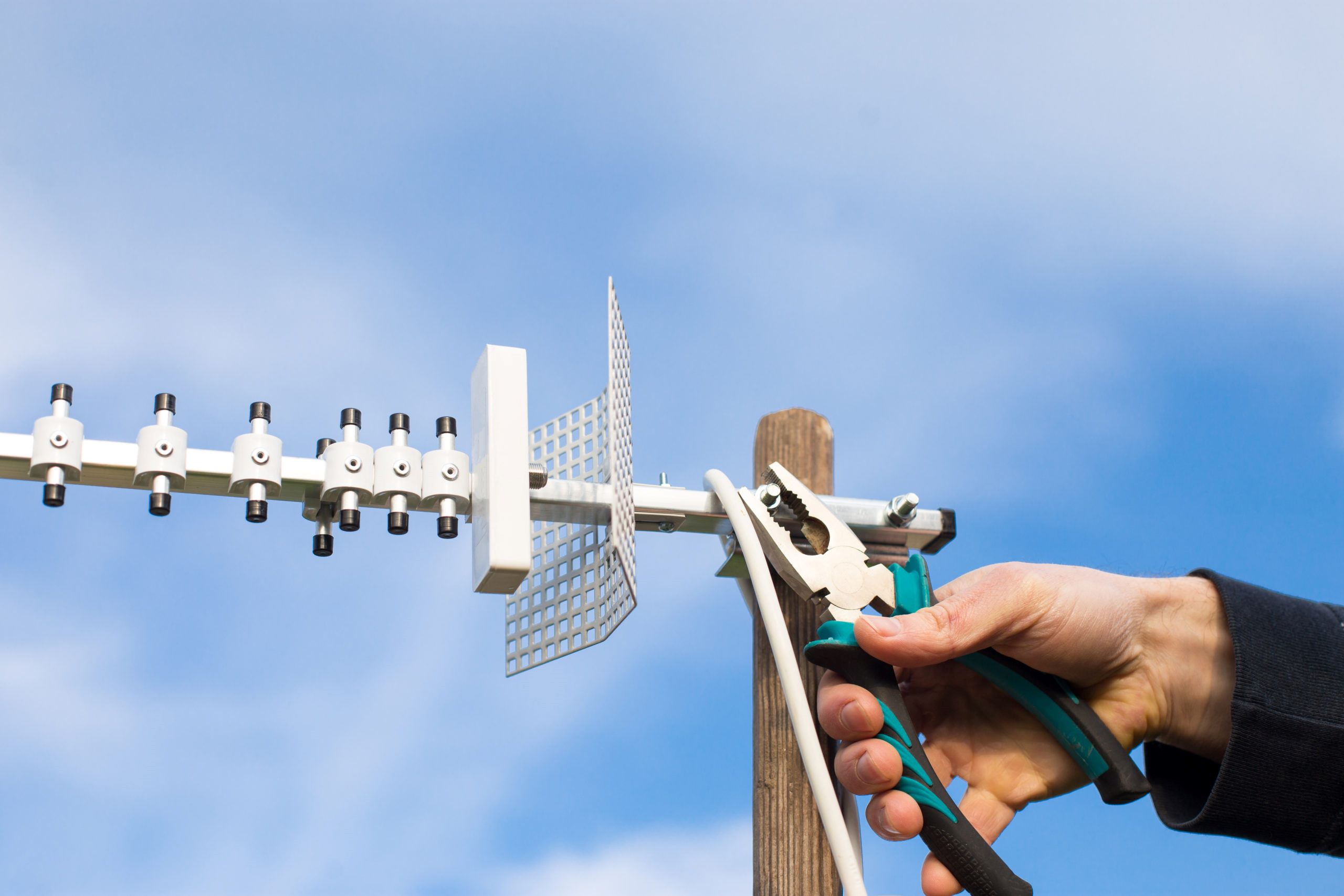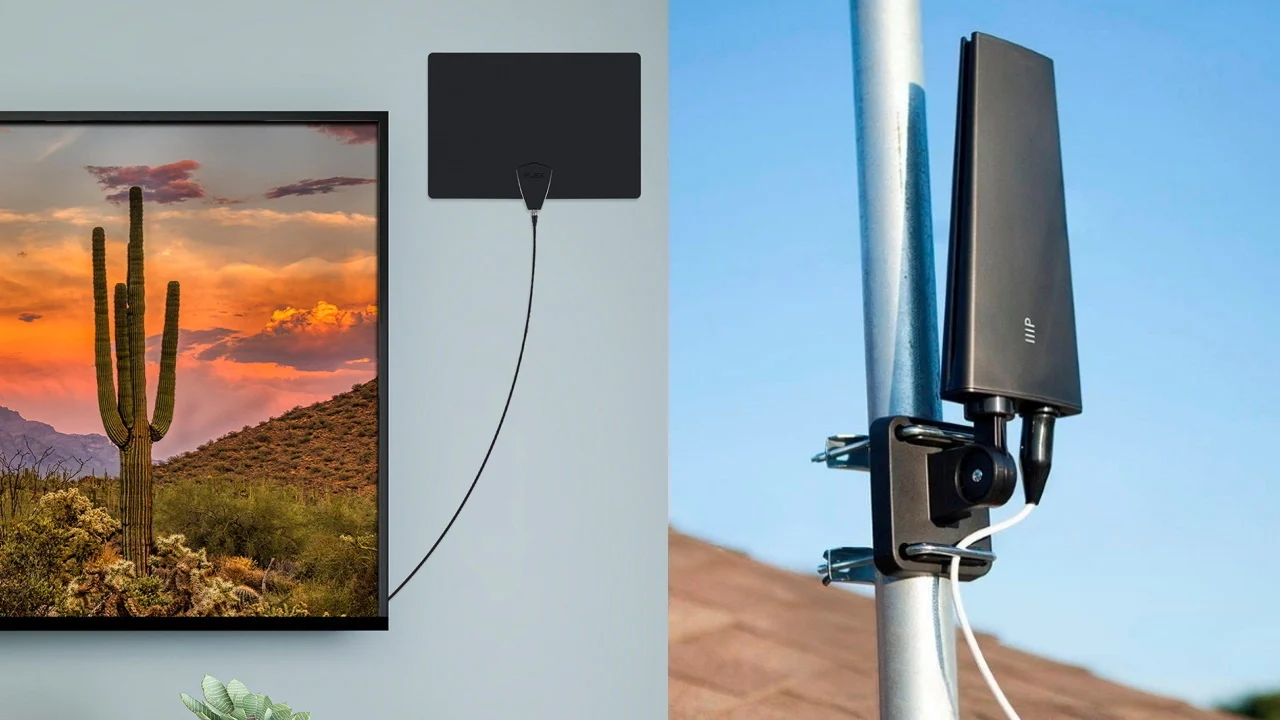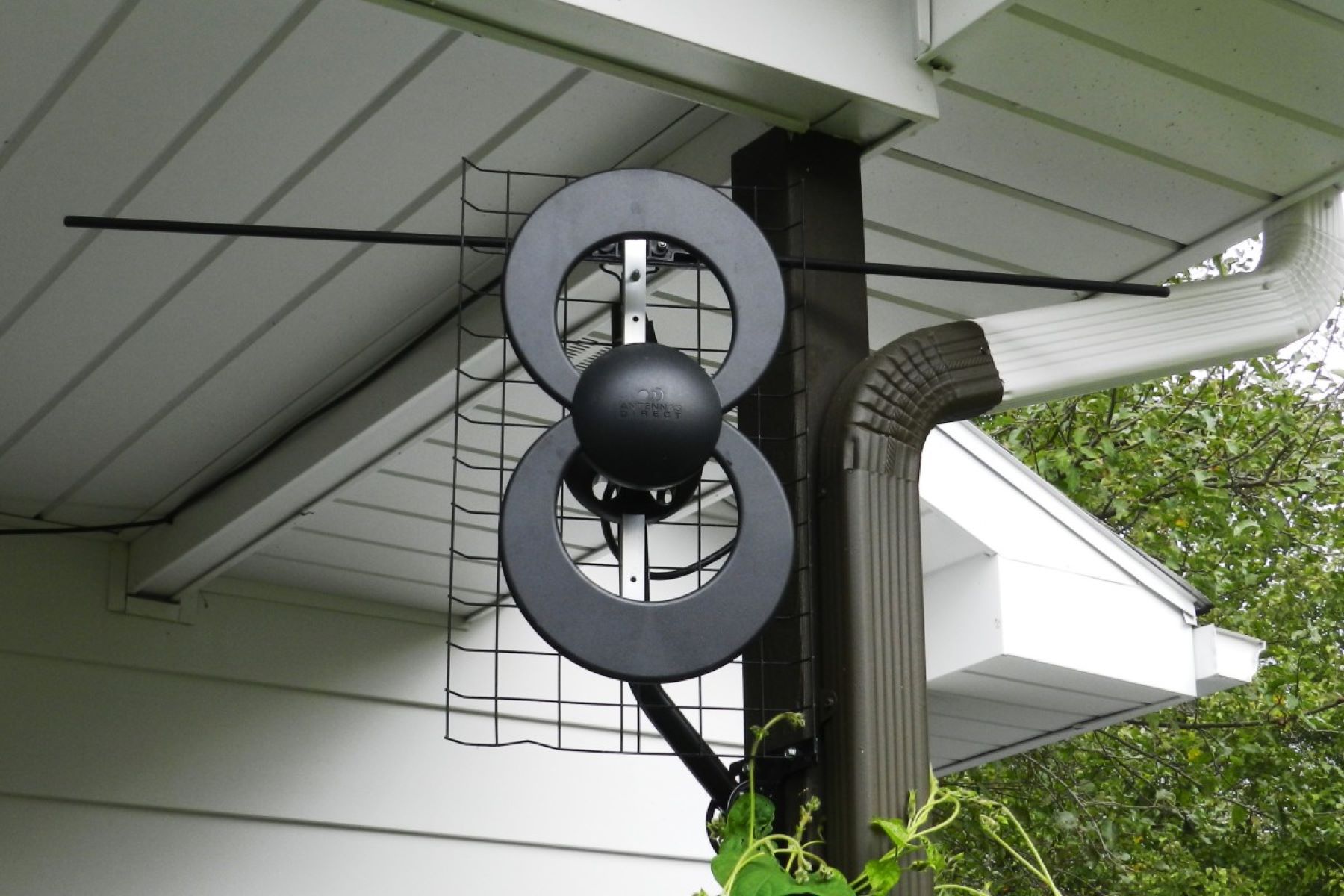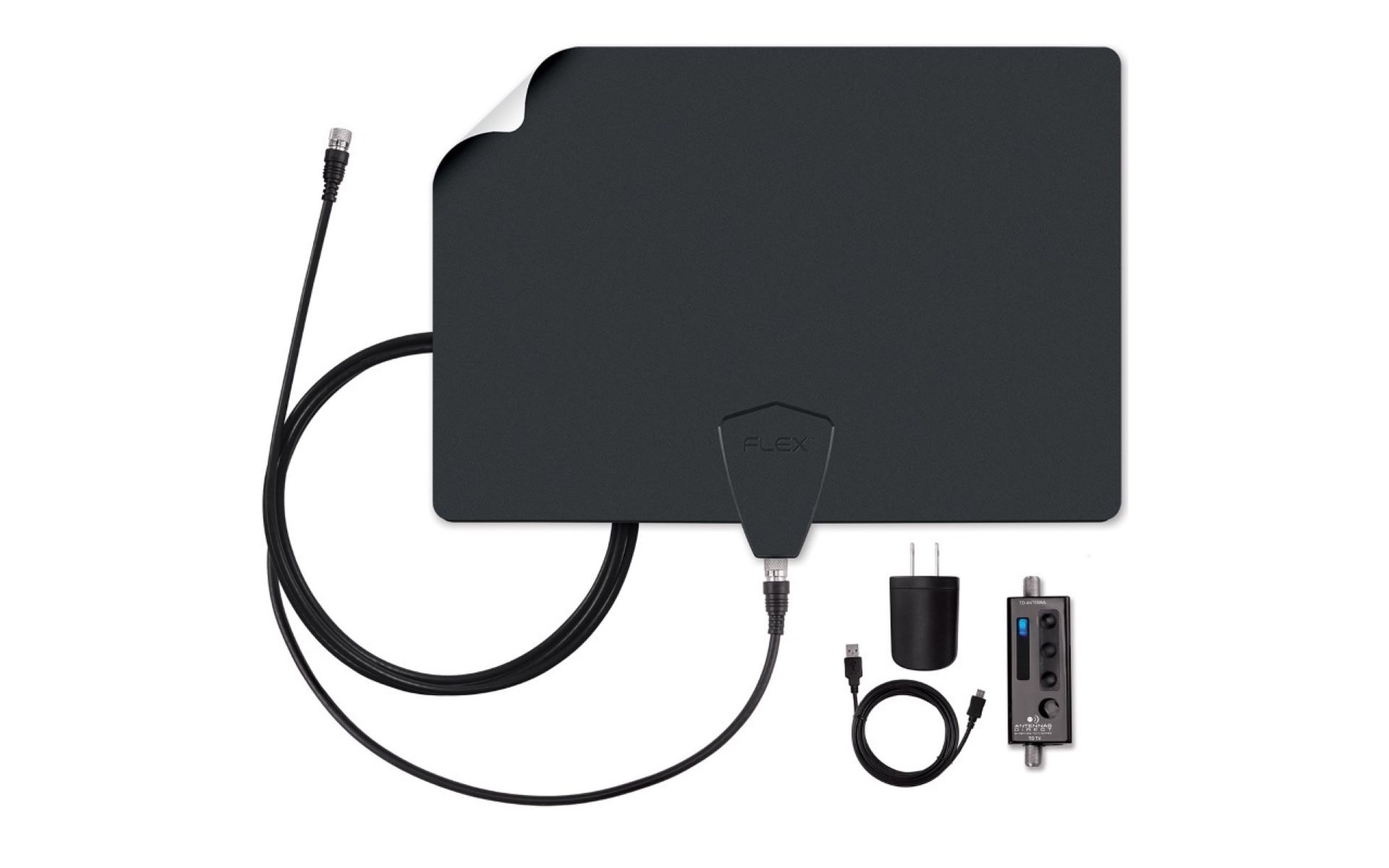Introduction
Positioning a TV antenna properly is crucial for ensuring optimal signal strength and reception. Whether you’re an avid TV viewer or looking to reduce your cable bills, knowing how to position a TV antenna can help you access a wide range of local television channels for free. Determining the correct positioning requires a basic understanding of signal strength and the right location for your antenna.
With the advancement of technology, TV antennas have come a long way from the rabbit ears of the past. Nowadays, modern indoor and outdoor antennas are designed to capture digital signals, providing clear and crisp images without the need for a cable or satellite subscription. However, even the best antenna won’t provide satisfactory results if it’s not positioned correctly, as obstructions, distance, and interference can affect signal quality and reception.
In this guide, we will walk you through the steps of choosing the right antenna and finding the ideal location for it. We will discuss how to properly position the antenna and offer tips on fine-tuning for better reception. Additionally, we will cover the importance of testing the signal and provide troubleshooting tips to help you overcome any issues you may encounter.
By following these guidelines, you will be able to enjoy a wide variety of free over-the-air channels in high definition, allowing you to watch your favorite shows, news, and sports without relying on costly cable or satellite subscriptions.
Choosing the Right Antenna
Before you start positioning your TV antenna, it’s essential to choose the right antenna for your specific needs. There are a few factors to consider when making your selection:
- Awareness of signal availability: Begin by determining the available signals in your area. You can check websites like antennaweb.org or tvfool.com to find out which channels are accessible and the distance between your location and the broadcasting towers.
- Indoor or outdoor: Decide whether you want an indoor or outdoor antenna. Indoor antennas are typically more compact and easier to install, while outdoor antennas provide better overall reception and are suitable for areas with weaker signals or obstructions.
- Signal reception range: Consider the range of the antenna you’re interested in. If you live far away from the broadcast towers or in a rural area, an antenna with a longer range will be more beneficial.
- Antenna type: There are various antenna types available, such as multi-directional and directional antennas. Multi-directional antennas receive signals from all directions, while directional antennas focus on signals from a particular direction. Consider your location and the direction of the broadcasting towers to determine which type suits you best.
Additionally, it’s important to take into account any specific requirements you may have, such as compatibility with 4K televisions or compatibility with the transmission frequencies used in your area.
Taking the time to research and select the right TV antenna will ensure that you have the best chance of receiving clear and uninterrupted signals. Remember, the antenna you choose will directly impact the quality and number of channels you can access, so make sure to invest some effort into this decision.
Understanding Signal Strength
When positioning your TV antenna, it’s crucial to have a basic understanding of signal strength. Signal strength refers to the power of the electromagnetic waves sent out by the broadcasting towers and received by your antenna. The stronger the signal, the better the quality of the received television signal.
Signal strength can be influenced by a variety of factors, including distance from the broadcasting towers, obstructions such as buildings or trees, and interference from other electronic devices. It’s important to note that different channels may have varying signal strengths, even if they are transmitted from the same tower.
To determine the signal strength in your area, you can use online tools, such as antennaweb.org or TV signal strength meters. These tools will provide you with vital information about the strength and direction of the signals you can receive.
Signal strength is usually measured in decibels relative to a milliwatt (dBm). A stronger signal will have higher dBm values, whereas a weaker signal will have lower dBm values. In general, a signal strength of around -50 dBm is considered excellent, while a signal strength below -80 dBm may result in poor reception or no signal at all.
When positioning your antenna, aim to find an area that receives optimal signal strength for the channels you want to access. If you’re using an outdoor antenna, consider elevating it to avoid any obstructions that may block or weaken the signal. Angle the antenna towards the broadcasting tower if you’re using a directional antenna, or position it in a central location if you’re using a multi-directional antenna.
Understanding signal strength will help you make informed decisions when positioning your TV antenna. By maximizing signal strength, you can enhance the quality of your television reception and ensure a better viewing experience.
Finding the Ideal Location
Finding the ideal location for your TV antenna is crucial in ensuring optimal signal reception. Here are some key points to consider when determining the best location for your antenna:
- Height: The higher you position your antenna, the better your chances of receiving a stronger signal. If you have an outdoor antenna, consider mounting it on your rooftop or in an attic. For indoor antennas, placing them near a window or on a higher shelf can help improve reception.
- Line of Sight: Ensure that your antenna has a clear line of sight to the broadcasting towers. Obstructions such as buildings, trees, or mountains can weaken the signal. If possible, position your antenna away from these obstacles to maximize reception.
- Orientation: Determine the direction of the broadcasting towers in your area. Pointing your antenna towards the towers can enhance signal reception. Websites like antennaweb.org or TV signal strength meters can provide information on tower locations and the appropriate orientation for your antenna.
- Signal Interference: Minimize the potential for signal interference by keeping your antenna away from other electronic devices such as routers, cordless phones, or microwave ovens. These devices can emit electromagnetic waves that may interfere with the TV signal.
- Experimentation: Sometimes finding the ideal location requires some trial and error. Experiment with different placements and orientations to find the position that provides the best signal strength and reception quality.
If you’re unsure about the ideal location for your antenna, consider consulting with a professional installer or seeking advice from reputable online forums dedicated to TV antenna installation. They can provide valuable insights based on their experience and technical expertise.
Remember, finding the ideal location for your TV antenna is essential for optimal signal reception. Taking the time to carefully consider these factors will greatly improve your chances of enjoying clear and uninterrupted television viewing.
Positioning the Antenna
Once you have determined the ideal location, it’s time to position your TV antenna. Follow these steps to ensure proper positioning:
- Mounting: If you have an outdoor antenna, securely mount it on your rooftop or in an attic using a mast or mounting bracket. Make sure it is stable and aligned with the direction of the broadcasting towers. For indoor antennas, place them on a sturdy surface or use an adhesive wall mount.
- Orienting: Point your antenna in the direction of the broadcasting towers. Use a compass or refer to the information from antennaweb.org or TV signal strength meters to determine the precise orientation. If using a directional antenna, adjust the angle for the best signal reception.
- Tilt and Rotation: Adjust the tilt and rotation of the antenna to fine-tune its position. Tilting the antenna slightly upward or downward can sometimes improve reception, especially if you have obstructions in the signal path. Small adjustments in rotation can also make a difference in signal strength.
- Secure Wiring: Ensure that the coaxial cable connected to your antenna is properly secured and not damaged. Avoid any sharp bends or kinks in the cable, as this can impact signal quality. Use cable clips or ties to keep the cable neatly organized and protected.
- Grounding: If you have an outdoor antenna, it’s important to properly ground it for safety and to protect against lightning strikes. Consult the manufacturer’s guidelines or hire a licensed electrician to ensure proper grounding.
It’s worth noting that different antennas may have additional positioning instructions specific to their design. Always refer to the manufacturer’s guidelines for your particular antenna model for the best results.
Once you have positioned the antenna, step back and double-check that it is secure and aligned correctly. Ideally, the antenna should be facing the broadcasting towers without any obstructions, and the wiring should be properly connected and organized.
Remember that proper positioning of your TV antenna is crucial for optimal signal reception. Take the time to ensure that your antenna is installed correctly and aligned accurately for the best possible television viewing experience.
Fine-Tuning for Better Reception
After positioning your TV antenna, you may need to fine-tune it to achieve the best possible reception. Here are some tips to help you optimize the signal quality:
- Scan for Channels: Use the channel scan feature on your television or digital converter box to search for available channels. This will allow you to identify the channels that you can receive and determine the signal strength for each channel.
- Adjust the Antenna Position: If you notice poor signal reception or missing channels, try making slight adjustments to the position of your antenna. Move it slightly left, right, up, or down to see if there are any improvements in signal strength.
- Reposition the Antenna: Sometimes, moving the antenna to a different location within the same room can make a significant difference. Experiment with various positions to find the sweet spot for optimal reception.
- Rotate the Antenna: If you have a directional antenna, try rotating it slightly in different directions. This can help you find the best angle for capturing the strongest signal from the broadcasting towers.
- Use an Amplifier: If you are experiencing weak signals or long cable runs, consider using a signal amplifier. An amplifier can boost the signal, allowing for better reception, especially when dealing with long cable lengths or splitting the signal to multiple devices.
- Minimize Interference: Reduce potential interference by keeping electronic devices and appliances away from the antenna. Devices such as routers, cordless phones, and microwaves can emit electromagnetic waves that may disrupt the TV signal.
It’s important to note that fine-tuning your antenna may require some patience and experimentation. It’s a good idea to have someone assist you while you make adjustments to the antenna, as they can help you identify any changes in signal strength during the process.
Be sure to rescan for channels after each adjustment to see if there are any improvements. Take note of the changes in signal strength and the performance of specific channels to determine the optimal positioning for your TV antenna.
By fine-tuning your antenna in this manner, you increase the chances of obtaining the best signal reception and enjoying a clearer and more reliable television viewing experience.
Testing the Signal
Once you have positioned and fine-tuned your TV antenna, it’s important to test the signal to ensure that you have achieved optimal reception. Here are some steps to follow when testing your TV signal:
- Channel Selection: Tune your television to a specific channel and check its signal strength and quality. Select channels that are known to have varying signal strengths. This will help you assess the overall performance of your antenna.
- Signal Strength Meter: Use the signal strength meter feature on your television or digital converter box to measure the signal strength. Most TVs have this feature built-in and can display the signal strength in dBm or some form of visual meter.
- Picture Quality: Observe the quality of the picture and the audio to ensure that it is clear and without distortion. Pay attention to any pixelation, freezing, or audio dropouts, as these can indicate poor signal reception.
- Channel Availability: Confirm that you can access all the desired channels. Check for missing channels or channels that have weak signals. If necessary, reposition or adjust your antenna to improve the reception.
- Rescan for Channels: Perform a channel scan on your television or digital converter box periodically, especially after making adjustments to your antenna. This will help you discover any new channels that may have become available or resolve any reception issues.
During the testing process, take note of the signal strength readings, the quality of the picture and audio, and any specific channels that may exhibit weaker signals. This information can be used to further fine-tune your antenna and improve your overall TV viewing experience.
Keep in mind that environmental factors such as weather conditions or nearby construction may impact signal reception. If you notice sudden changes in signal quality, consider repositioning or adjusting your antenna accordingly. Some channels may require periodic adjustments due to changes in broadcasting conditions.
Regularly testing the signal ensures that you are receiving the best possible reception, maximizing the number of channels and the quality of your television viewing experience.
Troubleshooting Tips
While positioning your TV antenna, you may encounter certain challenges or issues with signal reception. Here are some troubleshooting tips to help you overcome common problems:
- Check Connections: Ensure that all cables are securely connected to your TV and the antenna. Loose or damaged connections can result in poor signal reception. Replace any damaged cables if necessary.
- Inspect the Antenna: Examine your antenna for any visible damage or wear. Ensure that the antennas elements, such as the dipoles or the reflectors, are intact and in proper condition. Replace or repair any damaged elements that may affect signal reception.
- Scan for Channels: Perform a channel scan on your television or digital converter box to ensure that all available channels are detected. If certain channels are missing, adjust the position or orientation of your antenna to improve reception.
- Reposition the Antenna: If you experience weak or inconsistent signal reception, try repositioning your antenna to a different location within your home or outdoor area. Experiment with different heights, angles, and orientations to find the best position.
- External Interference: Identify and minimize external sources of signal interference. Keep your antenna away from electronic devices, wireless routers, and appliances that may emit electromagnetic waves. Unplug any unused devices and observe if there are any improvements in signal quality.
- Obstructions: Analyze your surroundings for any physical obstructions that may be blocking the TV signal. Adjust the antenna’s position to bypass or minimize obstructions such as tall buildings, trees, or mountains.
- Amplification: If you’re dealing with a weak TV signal, consider using a signal amplifier. An amplifier can boost the signal strength, providing better reception and extending the range of your antenna.
Remember that troubleshooting TV antenna issues may require patience and experimentation. It’s essential to be methodical and test different solutions to pinpoint the problem and find the best resolution.
If you’ve exhausted all troubleshooting options and are still experiencing significant signal reception issues, consider consulting with a professional technician or contacting the manufacturer for further assistance. They may provide specialized guidance or recommend specific products to help enhance your TV antenna’s performance.
By applying these troubleshooting tips, you can effectively address common challenges associated with TV antenna reception and enjoy improved signal strength and clarity for a seamless television viewing experience.
Conclusion
Positioning a TV antenna correctly is essential for ensuring optimal signal reception and enjoying a wide range of free over-the-air channels. By following the steps outlined in this guide, you can position your antenna effectively and maximize signal strength.
Choosing the right antenna, understanding signal strength, finding the ideal location, and fine-tuning for better reception are all key factors in achieving the best possible television viewing experience. Additionally, testing the signal and troubleshooting any issues that arise are crucial for maintaining consistent and reliable reception.
Remember to research signal availability in your area, choose between indoor or outdoor antennas, and consider factors such as signal reception range and antenna type. Proper positioning involves finding the right height, ensuring a clear line of sight, orienting the antenna towards the broadcasting towers, and minimizing interference.
Fine-tuning your antenna through adjustments in position, tilt, rotation, and the use of signal amplifiers can further optimize signal strength and reception quality. Regularly testing the signal, scanning for channels, and troubleshooting any problems that arise will ensure that you receive the best possible television viewing experience.
In summary, with the correct positioning and configuration of your TV antenna, you can access a variety of free over-the-air channels and enjoy high-quality, uninterrupted television broadcasts without the need for expensive cable or satellite subscriptions. Take the time to follow the suggested steps, make necessary adjustments, and enjoy the benefits of free, high-definition television.







